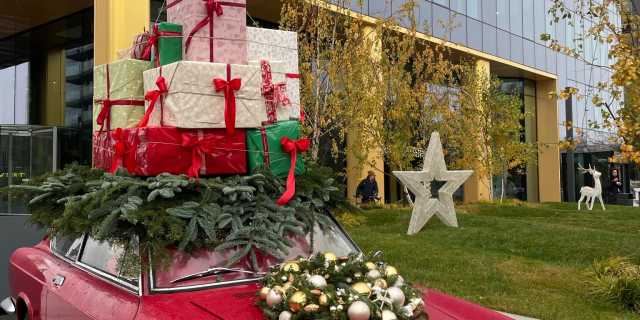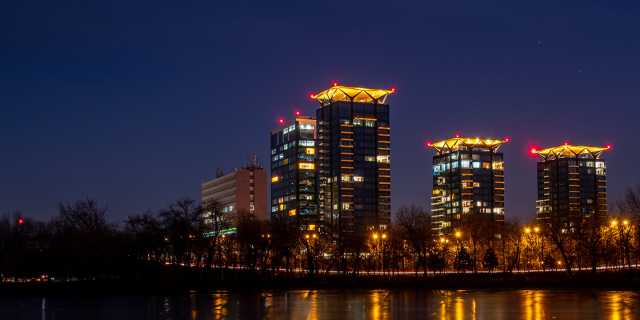The first attestation of the neighborhood, dating back several hundred years, mentioned Moşia Florești, a name given by a family of boyars – Florescu – who owned the land. While Drmul Plăcintei (Pie Road) was once the neighborhood’s main artery, Floreasca is now crossed, along a little over 4.5 kilometers, by Calea Floreasca. Initially, the area was divided into three areas called „vetre” (Floreasca de Sus – upper, de Mijloc – middle, and de Jos – lower).
Here, in time, the city's landfill was formed, on the edge of which lived, in a slum, various peasant families.
The area was to be reborn between 1913 and 1922 under the baton of the architect Reiner, who laid the foundations of an extensive urbanization project, building a series of two-story buildings, still in operation. An important milestone in the history of this area came with the inauguration, in 1935, of the Ford Romania plant, after the Bucharest Emergency Clinical Hospital had been opened a year before. In 1936, Lake Floreasca was arranged, covering an area of 70 hectares.
The years of communism would bring a new transformation of the neighborhood. During that period, numerous buildings of up to four stories were constructed, and the streets were reorganized with composers’ name.
With the organization of the World Youth Festival at the Floreasca Hall in Bucharest in 1953, the landfill was surrounded by a wooden fence, so as not to make a bad impression on visitors. Later, a cinema, a school, several commercial spaces, and a gym were opened in the area.
In 1960, the decision was made to rehabilitate it, and it was announced that in October the inhabitants would be relocated, and the old buildings surrounding it would be demolished. After a year, the works at Floreasca Park started on the place of the former pit, which lasted for two years. A skating rink was also put in place.
After the fall of the communist regime, the face of the neighborhood really changed, and it became attractive to investors who saw the potential of the area and the development of an actual community. Among the most important transformations, there are the modern office buildings, restaurants, clubs, and company headquarters. In 2013, the tallest building in Romania, Sky Tower, was inaugurated in the area. It is 137 meters high and has 37 floors. In the same year, the works of the first two buildings of one of the most exclusive residential complexes in the area were completed – One Floreasca Lake, with a panoramic view over Floreasca Lake. Three years later, a third building, part of the same complex, is completed, and in the spring of 2018, One United Properties begins work on One Floreasca City multifunctional development, consisting of One Mircea Eliade residential component and One Tower office component. The uniqueness of this contemporary project delivered in 2021 is brought first by the place where it was arranged – precisely the former industrial platform of the Ford factory, which had been taken out of use, but also by its special architecture and sustainable construction techniques.
Today, without knowing its past, crossing its streets lined with chic houses, modern buildings, and green spaces, nothing would make you think about the ancient history of this neighborhood.
Data for this article was obtained from floreasca.com, b1tv.ro, turismistoric.ro, and Wikipedia.org.
More on our blog
- One Insider
- Real estate: past, present and future
- Layout and style
- Real estate education
- Free time in Bucharest
- Tourist attractions in Bucharest
- The neighborhoods of Bucharest
Read also










